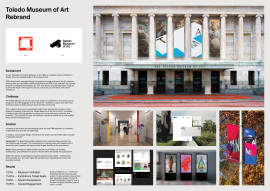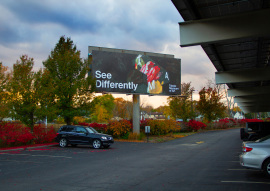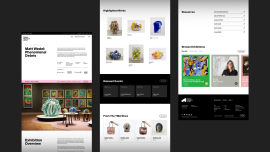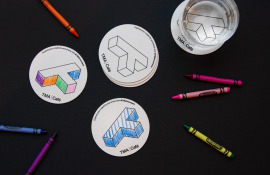 11
11
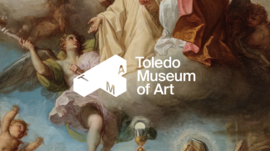
TMA’s collection is a great source of pride for Toledo. It’s the one place where the city’s past glory and emerging future are equally alive. We drew inspiration from that pride to create a brand as welcoming as it is ambitious.
Through research from the museum’s diverse audience, we found a tension between the desire to define the “model museum of the 21st century” and the need to honor their legacy as a cornerstone of the community.
We grounded the rebrand on a strategic platform: The transformative power of art for all of Toledo.
Art is never static—it’s always dynamic. Art connects, enlightens, and emboldens. Just as a viewer’s perspective on a piece of art shifts as they cross the room, we wanted our work to continually drive a change in perspective – sparking new ideas about what art is, who artists are, and who art is for. We wanted to show that this transformative power of art lives at TMA for all of Toledo to enjoy.
What unfolded was a deep, wide ranging, 13-month brand refresh that began with a strategic deep dive, and concluded with an overhaul of the entire brand into a holistic new system.
TMA has one of the richest art collections in the world, but was ailing from all of the baggage of an “Art Museum” —seen as academic, dated, and elite— implicitly creating a divide between the museum and their community.
The museum's brand and visual identity hadn’t been touched for decades. As the Museum’s strategy to become the “Model Museum of the 21st Century” crystalized, it became clear that they needed the brand to be more welcoming, dynamic, and ambitious. It was time to evolve this powerful 120-year-old institution into a more inviting, lively, and future-facing brand.
Grounded in the campus’ “T-shaped” footprint, and set in motion to reflect the continual reframing of art history and its emerging future, the new TMA logomark is a dynamic, multifaceted icon built for the digital age.
In addition, key design moments in the system tap into TMA’s DNA. Some examples include:
Typography: The typography draws inspiration from historical styles employed by the museum over the years. The combination of a refined sans-serif typeface with a supporting serif typeface has been evolved to give flexibility to the new identity.
Glass: Paying homage to Toledo’s history as the City of Glass, the alchemy, translucency, and symbolism of glass is infused within the identity and applications.
Color: The identity is expressed through an adaptive color palette – reflecting the artwork within view.
Since launching the new brand identity, TMA has seen increases in year-over-year museum visitation of 20% and year-over-year exhibitions ticket sales have grown 140%.
In this same period, social media campaigns have seen a strong year-over-year growth in impressions (+116%) and engagement (+105%).
The Toledo Museum of Art serves as a critical crossroads, commons and cultural town square for a city that has seen radical shifts in the landscape over the past half century. Toledo’s demographics, politics, and economy combine to create one of the truest portraits of the complex life of a 21st century American city.
Also, Toledo Museum of Art, like so many others, is emerging from a complex history that was not always equally inclusive or accessible to the city’s whole population. Even today, the demographic attributes of the museum’s 380,000 annual visitors skew Caucasian, female, older, affluent, and highly educated – markedly different from the diverse and working-class neighborhood it calls home.
Over its history, TMA has broadened its view and its reach, but the 21st-century demands greater and more fundamental changes. The Museum’s incoming director launched an ambitious strategy to embrace a more inclusive vision – expanding the museum’s view to tell a truly global and broad history of art, while also ensuring that local voices stay strong, with their outreach, visitor experience, team and suppliers all reflecting their Northwest Ohio community.
Their goal was to embrace these important changes, while creating a sense of welcomeness, comfort and openness — to build a sincere culture of belonging.
No.
